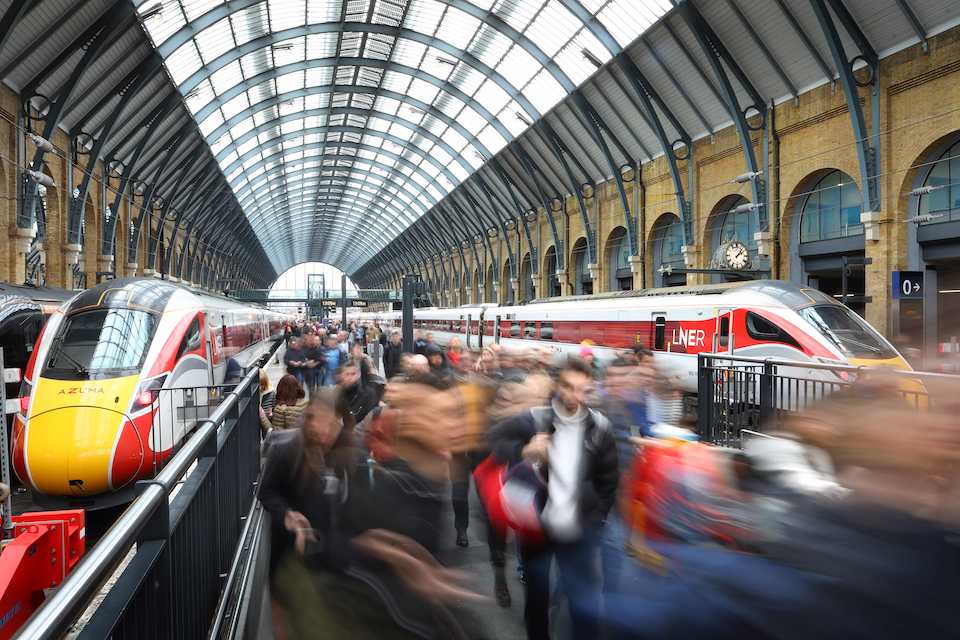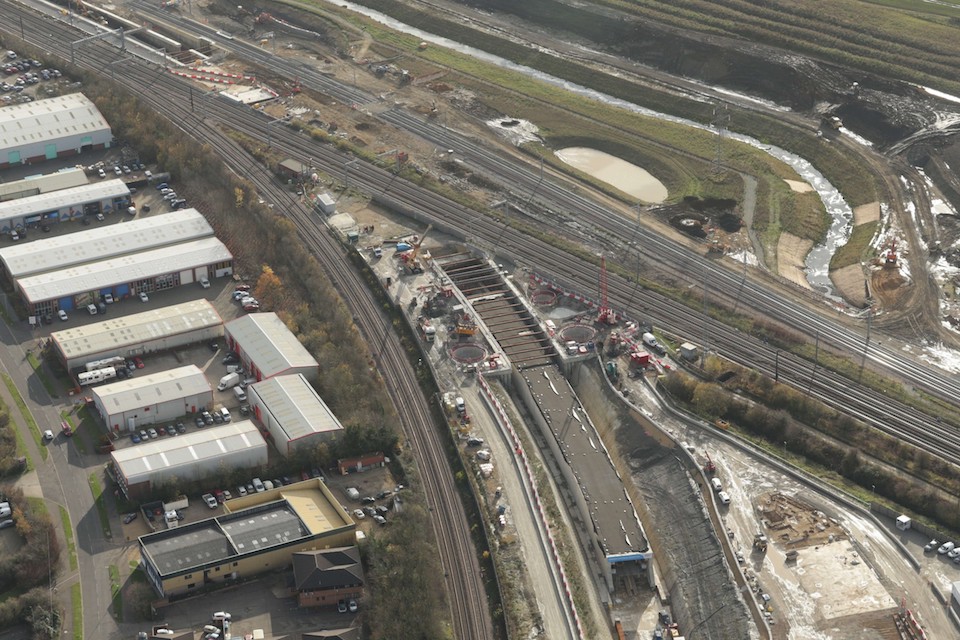Preserving access for freight is vital to a plan to speed up passenger services on the East Coast Main Line. The government-backed train operating company LNER wants to cut around thirty minutes off the journey, reducing the capital’s connection to a few minutes more than four hours. However, route availability between London and Edinburgh is reaching saturation. Speeding up the passenger service will also need to take account of growing freight traffic.
The East Coast Main Line is an intensively used route between the capitals of England and Scotland. LNER, the main passenger operator, shares the tracks with several other passenger and freight operators. The timetable, which accommodates fast freight, faster expresses, and regional and commuter traffic, is a finely tuned ballet. It doesn’t take well to disruption. However, LNER wants to recast the timetable to radically speed up the London to Edinburgh service.
Famous as the route of the Flying Scotsman
The government-run passenger train operator on Britain’s East Coast Main Line has tabled long-standing proposals to recast the prestigious London – Edinburgh route timetable. LNER is a brand set up by the UK Department of Transport after the commercial operation on the route collapsed. They want to run a regular service, connecting the two cities in just a few minutes over four hours. The East Coast Main Line, famous as the route of the Flying Scotsman, has always been at the forefront of express running, dating back a century or more.

Historically, the “Race to the North” was a commercial rivalry between the unrelated 1920s London and North Eastern Railway and its adversary on the West Coast, the London Midland and Scottish. Back in that golden age of Art Deco-styled steam locomotives, the competition was invoked to win over the well-heeled passengers who sought to reach their country estates in the North or their boardroom meetings in the South. Today, the prize is primarily to win over the hoi polloi, who choose to fly between the two capital cities. “If you’re in Edinburgh, you’re now going to have an hourly fast service which will be quicker, or at least as quick, door-to-door, as if you had been travelling by air”, said David Horne, who heads up the twenty-first-century version of LNER.
Physical Initiatives and long term digitalisation
Famously, an unbeaten world record was set on the East Coast Main Line. Steam locomotive 4468 Mallard, a radically streamlined design, briefly hauled a test train at over 126 miles per hour (202 kph). However, running trains every hour and almost every mile that match that 1936 achievement is still a challenge. Passenger services have not slowed down, but freight services have certainly sped up. Much of the segregated infrastructure and capacity for those slower trains has been lost.

Today, the ECML expresses share the tracks with faster (but not quite record-breaking) intermodal and block goods trains. Fitting that mixed traffic profile onto the tracks of the line is a complicated headache for timetable planners. Improvements to the capacity on the line are proving expensive and equally complicated to implement. Physical initiatives like the Werrington Dive Under and the long-term digitalisation of the signalling system have definite benefits for freight traffic. Moving freight onto parallel routes is a long-term aim, but sections of the line, particularly the northern 100 miles (160km) to Edinburgh, have no ready alternative route. “There’s still some work taking place by Network Rail and the industry to make sure the precise timings of freight trains can still be accommodated”, said Horne.
Some freight world-record setting
While getting very busy, the northern section of the line still has capacity for freight. While some historic heavy freight traffic, particularly coal, has been lost in recent years, industrial installations, notably Tarmac’s Dunbar cement works, generate daily traffic. It could be busier still. It should be noted that the Scottish capital, Edinburgh, currently has no intermodal facilities, bar a long redundant terminal lying overgrown on the city’s eastern edge.
The cities on the line’s northern extension – Dundee (no intermodal traffic) and Aberdeen (underused) do not at present generate daily traffic that would conflict with the core London – Edinburgh run. However, given the Scottish government’s stated intention of radically growing cross-border intermodal traffic, any timetable planner would do well to bear in mind that future possibility. It’ll be a headache for the future – unless there’s a modern-day Mallard out there, capable of doing some freight world-record setting, a hundred years on from Mallard’s celebrated run.
